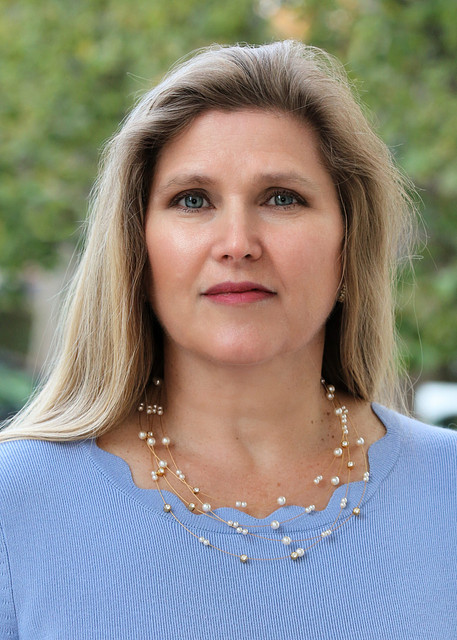To maximize earning potential, writers need to make the most of the time they work, whether it’s 40 hours a week or 40 hours a month.
At the recent ASJA 2024 conference, self-employed writers who work as freelance journalists, editors, content writers and strategists, and ghostwriters shared the deets about their favorite systems, apps, and short cuts for managing their business and optimizing their time and income.
Here are some favorites mentioned during the session:
Contacts, client management, and project management
Writers have a lot to keep track of, including clients, potential clients, pitches, assignments, assignment due dates, works in progress, outstanding invoices, and monthly, quarterly and annual earnings. Some writers use customer relationship management apps to keep every straight.

Diane Faulkner, an ASJA member and ghostwriter, editor, speaker, and content writer, and Rodika Tollefson, a journalism and content writer, use Less Annoying CRM, an app tailored to small businesses that costs $15 a month. “It’s endlessly tailorable,” Faulkner said. She customizes it to track assignment dates, due dates, amounts, and invoice numbers and dates. At the end of a quarter, the apps creates a report showing how much she worked and which clients were better than others based on the hourly rate. “Any time I email someone, I put (the CRM) in the BCC and it has saved me more than once going back and forth about who said what when,” she said.
Leslie Lang, an ASJA member and freelance content writer and journalist, prefers a spreadsheet for tracking work. She copied one from another freelancer that’s set up to track assignments by month, including due dates, fees, invoices sent and payments received, and time spent per project. Lang also uses the Trello project management app to manage and prioritize client work. Lang creates a Trello card for each assignment and uploads everything she needs to know about it, including background information, related articles, and due date.
Scheduling

Regardless of genre you write in, scheduling calls can be a time sink that negatively impacts your target hourly rate. All the conference panelists use a scheduling app to optimize scheduling calls. Calendly is a favorite. Tollefson started with the free version but upgraded to the paid tier when she needed to sync appointments between multiple calendars. “I have projects where I do 20 or 30 interviews, and it saves me hours of planning,” she said.
Faulkner customizes Calendly by including screening questions that prospective clients have to answer before she’ll take a call, for example, whether their project budget is $500, $5,000, or $50,000. “It helps me not have meetings that would be a waste of time,” she said.
ASJA member Jennifer Billock, a session attendee, recommends the Cal.com, which is free and syncs with other calendar apps.
Calendars and time tracking

Speaking of calendars, the panelists are big believers in putting every aspect of your work and nonwork life on a calendar. Lang uses the Google Calendar, which she accesses from her computer and phone. She puts “every little thing” on it, including anything work related and recurring events. Writers’ preferences for tracking hours worked vary. Lang notes how much time she spends on an assignment on that day’s to-do list and uploads it to her time tracker at the end of each day.
Tollefson swears by the free Clockify app, which she uses to track hours and type of work done in each (client assignment, administrative tasks, etc.). “For client work, if I know how long things take, I can quote with confidence” the next time she’s offered a similar project, she said. “When I track administrative time and how much time I’m spending on email, it helps identify things that are time sucks. So if I want to make my business more efficient, I can find things to outsource.”

ASJA member Debbie Abrams Kaplan, an independent journalist and content marketing writer, uses the My Hours app. Starting to track her billable hours was “life changing,” Kaplan said, because it made her realize how low her hourly rate was for the journalism work she was doing. Since then, she’s branched into content marketing writing, at higher rates. “I kept a few journalism clients and decided to do one project a month for them, to keep it in the rotation,” she said.
Contracts
The conventional thinking is that writers should have a contract for everything they do. Faulkner had a lawyer create a sample contract that she uses with prospective clients, and adds two addendums, one that spells out the statement of work and another that lists other writing services she offers and what she charges for each. Some writers prefer using only a SOW, to avoid clients adding onerous language to a proposed contract. Tollefson gives clients the option of signing a contract but prefers to use a SOW she created and hired a lawyer to check.
Invoicing
Panelists and conference attendees use QuickBooks, FreshBooks, and Microsoft Excel to create, send, and track invoices. “I’ve been using QuickBooks for years, and as long as I keep up with data entry, it gives me and my CPA everything I need” for taxes, said Liz Seegert, an ASJA member and freelance journalist who attended the session.

Tollefson combines QuickBooks with Excel, which she uses to track invoices, estimates, and monthly goals. Lang is a FreshBooks fan. As soon as she finished an assignment, she makes a duplicate of the invoice for her last assignment from that outlet and changes the name and amount. “It takes less than a minute,” she said.
Calls
Faulkner admits to not liking to talk on the phone. She swears by Google Phone because it lets her screen calls. Instead of taking to her virtual assistant on the phone, Diane uses the Loom app to send the VA voice recordings of instructions for work that needs to be done along with related screen shots from her computer.
Virtual assistants
Tollefson uses virtual assistants to do research, identify potential work opportunities, look up contacts, or to update her website. She manage one client’s website, including providing graphic design, and has her VA create images. When she wrote a book, Tollefson had the VA create the assets to promote it. She finds hiring a VA directly less expensive than going through an agency, especially since agencies often require clients to hire VAs for set amount of time per month. She currently pays a VA based in the Philippines $9.50 an hour, substantially less than fees US-based VAs command, which she said can range from $30 to $50 an hour or more.
Preserving your work

Publications and clients come and go, and there’s no guarantee the work you sweated over will be online five or 10 years down the road. Panelists suggest keeping track of published works in the same CRM app or spreadsheet you use to track assignments and invoices, and cataloging .pdfs of published works in a digital archive. Kaplan uses the Print Friendly app to make printer-friendly .pdfs of articles. She uses down time – like when she watches TV – to add new works to her Skyword or Contently portfolios.
Michelle Rafter is a Portland Oregon, ghostwriter who specializes in management, people, tech, and workforce issues. She’s ASJA’s publications chair, and part of ASJA’s 2024-2025 conference planning committee.
Browse Articles
Topic
ASJA, Freelance Life, Productivity, Tips, Running Your Business

